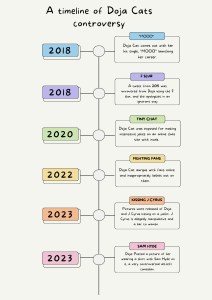Why You Should Use Bandcamp
March 25, 2021
Over the past year, COVID-19 has decimated the independent music industry. Hundreds of notable venues (The Magic Stick in Detroit, for example) have shut their doors or have put themselves up for sale due to lack of activity. The lockdowns have forced many artists to release new projects on streaming services such as Spotify, where each individual stream only pays between $.003 and $.005 to the artist. By this metric, it would take an artist around 250 streams to make a single dollar, and for many up-and-coming artists, this just isn’t a feasible source of income. All things considered, it might seem like the common musician is simply doomed to poverty in today’s climate if they aren’t an award-winning, established act from the get-go. However, this is not necessarily the case.
 The main gripe that many artists and consumers have with Spotify and other music streaming platforms is that they don’t pay the artist for the art that they produce, and instead pocket a healthy chunk of the proceeds, ensuring the further expansion of the company. Without touring and live gigging, many artists’ entire income has to come from streaming, unless they have merchandise or physical albums to sell (more on that later), and Spotify just doesn’t provide enough for the majority of artists. However, Bandcamp, an online music service, does.
The main gripe that many artists and consumers have with Spotify and other music streaming platforms is that they don’t pay the artist for the art that they produce, and instead pocket a healthy chunk of the proceeds, ensuring the further expansion of the company. Without touring and live gigging, many artists’ entire income has to come from streaming, unless they have merchandise or physical albums to sell (more on that later), and Spotify just doesn’t provide enough for the majority of artists. However, Bandcamp, an online music service, does.
Bandcamp, at its core, is an online merch table for hundreds of thousands of artists. Any artist can upload music and other products to a Bandcamp page, regardless of their following or experience, and can thus reach hundreds of potential fans. Bandcamp, unlike Spotify, is designed to benefit the artist and their work. While the site does charge a sales fee (10% on physical merchandise, 15% on digital merchandise), the majority of the revenue returns to the artist. Additionally, unlike many distributors, Bandcamp pays its artists for every sale they make, rather than forcing them to wait for quarterly totals. This ensures that artists are receiving more timely payments, and are thus able to support themselves off of their art in a time where this support does not come easily.
Aside from the actual fiscal reasons to use Bandcamp, there is an element of connection with the artists in Bandcamp that faceless streaming services do not offer. I personally use Bandcamp quite often to purchase CDs of noise music from my favorite creators, and on multiple occasions these transactions involve actual contact with them! Recently, I purchased the album Trophy by Chicago-based power electronics group Bloodyminded, and got to correspond directly with Mark Solotroff, the mastermind of the project. The CD came to my mailbox a few days later, and included a bunch of old Bloodyminded concert flyers (which are now hanging around my room), and a handwritten letter from Mr. Solotroff himself, about an upcoming release from the band. This whole dynamic of getting closer to an artist you admire is exciting to say the absolute least, and Bandcamp allows you to do so with ease.

In a time where the artistic world is being decimated by a raging pandemic, it is important to remember that the world would be a much duller and less beautiful place without artists and creators of all types, and that we should support them accordingly. While streaming services like Spotify do provide a small chunk of fiscal support to artists, I encourage you to check out Bandcamp and all that it has to offer. It isn’t the most typical route to go about listening to music, but it is absolutely the most rewarding.








